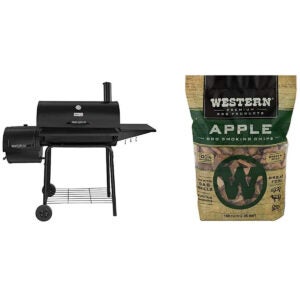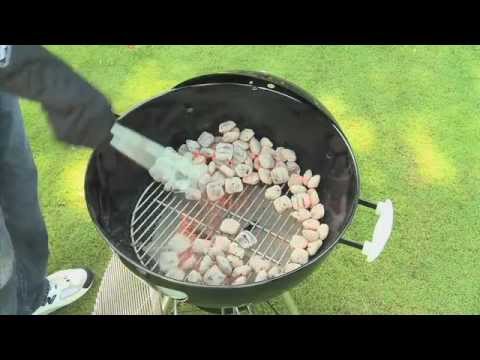
If you are planning to smoke ribs, you should know how to check the internal temperature of the meat. Ribs are ready when their internal temperature is at least 175 degrees Fahrenheit. These steps will tell you if the ribs were cooked. Barbecue gloves are recommended. Alternatively, you can buy a Napoleon Bluetooth Wireless BBQ Thermometer.
You must ensure the meat is at least 165 degrees F before you begin cooking ribs. Once you have checked the temperature, you should wrap the smoked ribs in foil and probe them with a probe thermometer. If you don’t own a meat-temperaturemeter, you can measure the distance between the ribs using a quarter-inch as a guide. This method is not foolproof, but it's the easiest way to test if the ribs are ready.

The next step in the process is to check the internal temperatures of the ribs. Once the internal temperature has reached at least 175°F, the ribs can be considered cooked. Use a meat thermometer to test this. The probe should be inserted into the rib to register an internal temperature around 180°F. The meat must be moist but not rubbery. Check the ribs every hour to ensure they don't dry or form a crust.
Also, when testing ribs it is important to note that the recommended temperature should not be below 200°F. The meat should be tender, which means that it should be tender. A probe thermometer is used to test the tenderness of the meat. The probe should be inserted with minimal tension. A probe thermometer, for example, should be inserted in the rib with minimal tension.
Smoked short ribs can prove difficult to cook. A thermometer will not accurately determine the internal temperature of a piece of meat. It is vital to ensure that the ribs are not cut on the bone. Also, make sure to inspect the meat's temperature. The best way to cook pork ribs is at 225°F. Although ribs are best cooked at a higher temperature, they can also be prepared at a lower temperature.

Checking the outside of the ribs will reveal the internal temperature. You must also check for the internal temperature of the meat, which should be at least 175°F. When meat pulls away from the bone, it is done. The meat will easily fall off the bones. You should cook the ribs to your desired doneness at 175oF. An instant thermometer is used to determine the internal temperature of the meat.
FAQ
What are some basic cooking skills?
Basic cooking skills include the ability to read recipes and measure ingredients. These are the essential skills you will need to be able cook for yourself. You can also save money by cooking at home.
Do I have to buy ingredients in order to cook?
You don't need to buy every ingredient. Premade sauces can be found in most grocery stores. However, if you want to save money, then buying pre-made meals can be helpful.
How do I learn about cooking and baking?
Cooking classes are available throughout the country. There are many schools that offer courses in pastry, baking, and wine tasting. A local community college, vocational school, or private institution can offer classes in cooking.
What is the average time it takes to become a chef? What Is the Average Career Path?
Five years is required to become a professional chef. You will learn basic cooking techniques, and get experience as a chef assistant. After your training is complete, you will be eligible to apply for a job as a sous chef, executive chef, or line cook. The average annual salary for a professional chef is between $25,000 and $60,000
Statistics
- The median pay for a chef or head cook is $53,380 per year or $25.66/hour, according to the U.S. Bureau of Labor Statistics (BLS). (learnhowtobecome.org)
- According to the BLS, chefs earn $58,740 a year. (learnhowtobecome.org)
- You'll be amazed that over 90% of CIA students receive scholarships and grants to finish their culinary studies. (ischoolconnect.com)
External Links
How To
How to make a perfect omelet
Omelets is one of my favourite breakfast foods. But how do they turn out so perfectly? I have tried many different recipes and methods, but none of them work. So I am sharing some tips and tricks today to help you make fluffy, delicious omelets every morning.
We should first know that eggs are very temperamental ingredients when making omelets. They must be fresh, preferably from the organic market, and be kept cold until cooking. If you don't keep them cold enough, the whites won't form properly, and the yolks will break down too much and become runny. This causes your omelets to look oddly colored. If you plan to cook the eggs right away, it is best to use room temperature eggs.
You can also separate the egg before you add it to the pan. It is important not to allow any white to mix with the yolk as this could lead to the omelet becoming curdled.
You might burn the bottom of the egg if you place the egg directly on the stovetop. This could ruin the texture of your omelet. Instead, put the egg in the microwave for 10 seconds before putting it into the pan. The heat from the microwave cooks the egg just enough without overcooking it.
Let's now talk about mixing eggs. When mixing eggs, it is important to thoroughly beat them. To do this, take the bowl from the mixer and flip it upside-down. Next, shake the bowl vigorously. This allows the air to be whipped and the egg to be mixed thoroughly.
The fun part is now - adding the milk to the mixture. Fold the eggs in the milk mixture by first pouring half of it into the egg whites. If you still see streaks of eggs, don't worry. These streaks will disappear once the omelet has been turned over.
After folding the eggs, place the pan on medium heat and wait for the oil to start sizzling. Once the oil begins to heat, add 1/4 cup butter and swirl the pan to coat it. Next, carefully open the lid and sprinkle salt into your pan. The salt will help to prevent the omelet's sticking to the pan.
Cover the pan once the omelet is formed and allow it to cool completely. Flip the omelet over using a spatula or flip the pan upside down. Cook the other side for another minute or two. Serve the omelet immediately by removing it from the pan.
This recipe works best using whole milk. Skimmed milk is also possible.